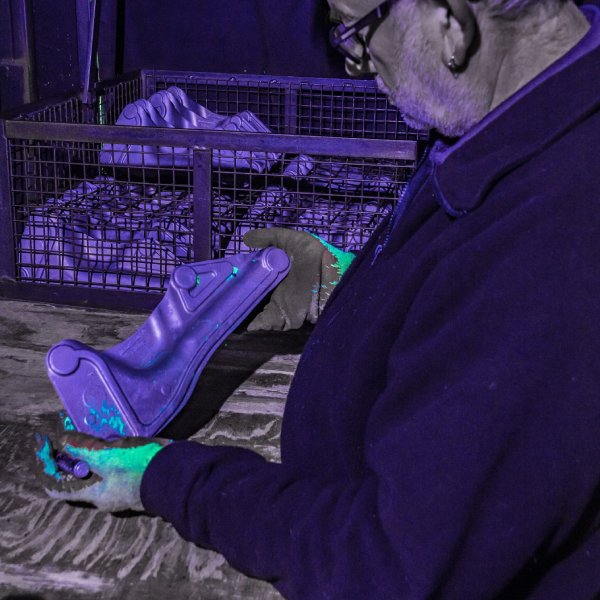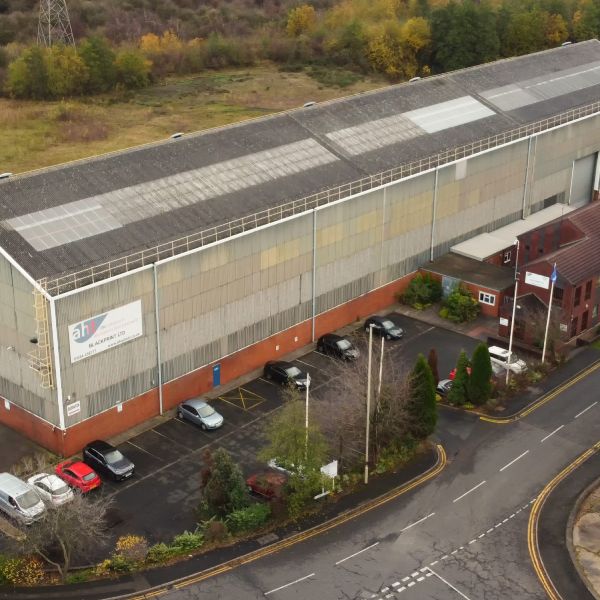Dye-Penetrant Flaw Detection
Dye-Penetrant Flaw Detection is a non-destructive testing (NDT) technique used to detect surface-breaking flaws using a liquid penetrant to detect the presence of surface flaws. All inspectors are trained and certified to PCN level II. We offer this as a stand alone service as well as after heat treatment and we are happy to give you a free trial.
Our Dye-Pen Process
- Parts are dipped in penetrant, once submerged under the surface it is then immediately withdrawn.
- The parts then dwell for a set amount of time, any excess penetrant is removed and soaked in cold water.
- Once removed from the cold water we flash dry and heat the parts for a set amount of time.
- Once the parts have been heat treated they are transferred to the Dye Penetrant Station for inspection.
- This can also be done as a stand alone service as well as after heat treatment and we are happy to give you a free trial.

What Is Dye-Penetrant Flaw Detection?
Dye-Penetrant Flaw Detection, commonly known as Dye-Pen, is a non-destructive testing (NDT) technique used to detect surface-breaking flaws in non-porous materials such as metals, ceramics, and plastics. This technique uses a liquid penetrant to detect the presence of any cracks, fissures, or other discontinuities on the surface of the material being tested.
The basic principle behind Dye-Penetrant Flaw Detection is relatively simple. A liquid penetrant is applied to the surface of the material being tested, and allowed to seep into any surface-breaking flaws. After a specified amount of time, the excess penetrant is removed from the surface, and a developer is applied. The developer acts as a contrasting agent, drawing the penetrant out of any surface-breaking flaws and highlighting them for inspection.
Dye-Pen Resources
Dye-Pen Is Non-Destructive Testing (NDT)
One of the key advantages of Dye-Pen is that it is a non-destructive testing method. This means that the material being tested is not damaged or altered in any way during the inspection process. This is important for materials that are expensive or difficult to replace, as well as for components that will be reused or recycled.
The 4 Methods Of Penetrant Systems
There are 4 methods of penetrant systems in the world of dye-penetrant flaw detection. Each of these systems are discussed in greater detail within our blog, which you can read here: Dye-Penetrant Flaw Inspection: Understanding the Types of Penetrant Systems
-
Water Washable Penetrant System
-
Post-Emulsifiable, Lipophilic Penetrant System
-
Solvent Removable Penetrant System
-
post-emulsifiable, hydrophilic Penetrant System
Dye-Pen: Blogs, News & Resources
We have a list of helpful blogs on the subject of Dye-Penetrant Flaw Detection, feel free to search our knowledge base and our blogs to familiarise yourself with the processes we undertake during the Dye-Pen service.
Blogs:
Dye-Penetrant Flaw Inspection: Understanding the Types of Penetrant Systems
Dye-Penetrant Flaw Detection FAQ’s
Dye-penetrant flaw detection involves applying a colored dye to the surface of a material, allowing it to seep into any surface defects. After a specified time, excess dye is removed, and a developer is applied to highlight any indications of flaws.
Dye-penetrant flaw detection can identify surface cracks, porosity, laps, leaks, and other surface defects that are open to the surface. It is particularly effective for detecting flaws in non-porous materials such as metals and ceramics.
Dye-penetrant flaw detection is primarily used on non-porous materials such as metals, ceramics, plastics, and composites. It may not be suitable for porous materials like wood or certain types of stone.
Dye-penetrant flaw detection offers several advantages, including high sensitivity to surface defects, ease of use, versatility across materials, cost-effectiveness, and the ability to inspect complex shapes and intricate parts.
Yes, dye-penetrant flaw detection can be automated to enhance efficiency and accuracy. Automated systems can streamline the process, reduce human error, and increase productivity.
Dye-penetrant flaw detection has limitations. It is primarily suitable for detecting surface flaws and may not be effective for subsurface or internal defects. Additionally, it requires proper surface preparation and may not be ideal for rough or heavily textured surfaces.
Yes, dye-penetrant flaw detection can be used on both ferrous (iron-based) and non-ferrous metals, including aluminium, copper, titanium, and stainless steel.
No, dye-penetrant flaw detection is a non-destructive testing method. It does not alter the material’s properties or cause any damage during the inspection process.
Safety precautions for dye-penetrant flaw detection include proper ventilation in the inspection area, using personal protective equipment (PPE), handling chemicals according to safety guidelines, and disposing of waste properly.
Dye-penetrant flaw detection is a widely used and reliable method for detecting surface flaws. However, its effectiveness depends on proper surface preparation, skilled application, and adherence to testing standards and procedures.








